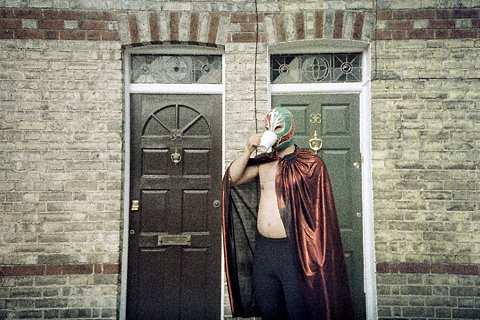Notes on a talk by Michael Stone at Centre of Gravity, February 18, 2012
Tonight’s talk is dedicated to Olin Winter Stone, my son, who was born on Friday at 12:08 in the afternoon while the snow was falling.
Within Within by Peter Levitt
“Spring is within a plum twig, bearing the snow-cold.” Dogen, 1243
No one can say what this life is.
Snow, spring, plum twig, and bearing.
each thing is cold cold cold
and cold cold cold
is snow, spring, plum twig and bearing.
This is within and this is
what is within. Bearing
sorrow in silence
or holding our happiness
for the world
are just plum twigs
bearing snow.
Shouting joy at passing cars
or whispering I’m going
to kill myself
in the heat of petals
in winter, the blossoming
of snow drops in spring.
Don’t try and don’t quit,
that’s the best I can say.
People who love you
and people who need you
and people you love
and those you hate
come to the same thing.
No matter how you turn,
you can never turn fast
or far enough. There
is no escaping
the ten directions
or ten thousand things
even when you die.
So take it easy.
Have a Cuban cigar.
Your shoulders are
wide as the path
is wide, your heart as open
as one blossom
two snow falls
three bows to the east
and four kisses,
one on each check.
Practice
I wanted to say a few words about practice. All of us here are so smart, we read large books and visit important websites. But reading about/knowing about practice is not the same as doing practice. Everyone’s had a few mystical experiences in their lives, but these are not as important as a long distance practice, breath after breath, moment by moment. Perhaps I should start every talk with this reminder. Practice allows us to look at the life we’re actually living, as opposed to the one we think we’re living, or that we would like to be living.
When I started the work of the present moment, it was called mindfulness. I think that’s a pretty apt term. Mindfulness means moment by moment attention. I call this practice intimacy, to be intimate with what’s going on in your life in this moment.
Close
Buddhism has so many kinds of language for getting closer. For taking a closer look. When I go on retreat with my teacher Roshi we sit so close together I can feel her breath on my cheek. There’s nowhere for either of us to hide. Even if your practice is slim or shady you show up face to face. We try to arrive together in this moment. We all have to come face to face with what’s really going on in our lives – with all those rascals inside us. Sometimes it’s easy to be face to face with someone – like my new son for instance. He has the most beautiful face in the world. He arrived as a conehead, he had Carina’s pelvis impressed into his skull, it was kind of sexy. The practice is always saying: come closer. To the faces you love the most. And to the faces you don’t love the most. There is something so powerful about the simplicity of practice. To balance the oversophistication of our culture we need to pay attention to each moment, to drop the theories and elaborations and pay attention. Our neighbours, our friends and families, need us to pay attention.
Reaction
What we can’t help noticing as we pay attention, moment by moment, is how we are predisposed to reactivity. I like. I don’t like. Over and over again. One of the things we find through attention is how we are predisposed in some way. The body has certain reactions built into it. It grabs onto certain moments in a room – the discomfort of a knee, for instance, or the dryness, or the fact of this new baby. Maybe I should get a baby? Where do I get one of those? Maybe I should get a husband. Could I find one at Centre of Gravity? Not so many husbands around here.
Window
As soon as we notice something, there are all kinds of ways we react to what we’re experiencing. Some reactions are fine, while others cause so much suffering. But our reaction shots add something to the experience, it creates complication. It’s like you have a clear window to see through, but so often the window is smudged over or there’s dust on it (old patterns) so you can’t see all the way through. The same holds for practice – how can we develop the capacity to see this moment clearly and simply? Our reactions, our judgments and interpretations, our past history or future expectations, very quickly cloud the window, so that simple awareness is not there by itself.
Simplicity of attention is actually freeing and joyful. We need to attend to our suffering and the suffering of the world in which we love. But dukkha is not just engaging one’s own discomfort. It’s about being sensitive to the emotional life of others too. It doesn’t happen only with mindfulness. We also need a discourse in our culture that helps us look critically at combining mindfulness with a certain ethical frame. Otherwise practice is only oriented towards well being. It becomes a self-improvement project.
Stress
Western Buddhism presents itself as a remedy against the stresses of modern life though, as Slavoj Zizek has noted, it actually functions as a perfect supplement to modern life. It allows some to decouple from stress, while leaving the causes of stress intact, consumptive forces continue unhindered along their creatively destructive path.
Emotions
The second chapter of Shantideva’s A Guide to the Bodhisattva’s Way of Life is about how to be face to face with emotions. Pema Chodron, in her excellent commentary, says it is about learning to see the changes underneath emotions. What are emotions? Are they something to express, observe, get rid of? Scholars keep trying to find terms for emotions in the Pali Canon without much success. That’s because in the Iron Age people didn’t have such strict categories for mind versus the body. “Emotions” or other specific terms were not organized the way we organize them. We hold emotions as a category distinct from thinking. But in the ancient world there was not a sharp divide between thinking and emotions. What is an emotion? A mix of physical sensation and mental conditions. Let’s hear what Shantideva has to say.
4.32
All other enemies are incapable
Of remaining for such a length of time
As can by disturbing conceptions;
The enduring enemy has neither beginning nor end.
Zizek
Zizek is on a tour of universities right now. He’s called Buddhism “the new opium of the people.” Oh, I just found out that David and Victoria Beckham has a four foot golden Buddha in their living room. Should I call Zizek and tell him? He said: “(Buddhism) enables you to fully participate in the frantic pace of the capitalist game while sustaining the perception that you are not really in it; that you are well aware of how worthless this spectacle is; and that what really matters to you is the peace of the inner Self to which you know you can always withdraw.”
Observer
There’s a way to practice where we turn ourselves into observers. We observe experience from a place of stillness. Perhaps we experience life as a kind of dream, or an image. We can tune into our peaceful inner self. This can be problematic. Many of us begin a sitting practice because we’re suffering and we’re looking for a place to withdraw from it. But here at Gravity the practice is about feeling the whole inhale and the whole exhale. Practice doesn’t leave anything out, or anyone behind. You stop observing breathing and you become breathing.
Ajahn Chah: “If you listen to the Dhamma teachings but don’t practice you’re like a ladle in a soup pot. The ladle is in the soup pot every day, but it doesn’t know the taste of the soup. You must reflect and meditate.
First you understand the dhamma with your thoughts. If you begin to understand it, you will practice it. And if you practice it, you will begin to see it. And when you see it, you are the Dhamma, and you have the joy of the Buddha.
If it isn’t good, let it die. If it doesn’t die, make it good.”
Plunge
When there’s no observer there is intimacy. Intimacy means the collapse of the observer. Perhaps the reason why we suffer so much is that we’re all observers hoping things will change but not wanting to get dirty or be uncomfortable. We have so many excuses not to get closer. Yes we need to practice to reduce stress, to find the right distance from reactivity. But then we need to plunge into the present moment.
How do you work with strong emotions like anger? Is it something you can express, or can let go of? Does it have a purpose? The first psychologist was Darwin because he insisted that emotions were also physical, and motivated us to act, to do something. For example, take the emotion of embarrassment. We’ve all had the experience of saying something, of saying too much, and then the emotion of embarrassment arises, and it stops us, it pulls us back. In other words, this emotional energy called embarrassment has a purpose.
Mood
Can we see our emotional life as a series of conditions that come together to have a purpose that motivates us to act? Then we have a response to Zizek. Our anxiety, fear, and anger are motivating. And they’re not your fault. The conditions are not all coming from somewhere inside of you. We need to look deeper into what we call emotion. In mindfulness practice we slow down to see the conditions that give rise to emotions. There are many psycho-physical processes that come together. “Emotion” is a noun, but really it’s a category for the interaction of many processes that make up anger or confidence or joy or fear. With practice we can tease apart the composite factors. How does fear arise? How does joy arise? They have a huge effect on the choices we make. When you’re feeling melancholy what do you eat? What kind of music do you listen to? This food and music can create a feedback loop. What you eat affects what you feel, and these loops can contract into a knot. Perhaps these knots are what we call moods. Being caught in a mood.
Flow towards
In the early collection of Buddhist texts called the Abhidharma one word that shows up frequently is the Pali word kilesa. It is the common term used to refer to “unwholesome” emotions. It means defilements. The mental states that defile the mind are so named. Asava is another term used to refer to what we would name negative emotions. In particular, asava refers to the active mood of negative emotions. The word literally means “flowing forward.” The term implies that negative emotions are not inherent in us but “flow towards” us on account of a stimulus or an event based on our response to it.
Asava
There are four types of asava.
Kamasava: unwholesome emotions related to sensual pleasure.
Bhavasava: unwholesome emotions related to becoming.
Avijjasava: unwholesome emotions related to ignorance.
Dihasava: unwholesome emotions related to dogmas.
There’s a subset of these negative emotions called anusaya. It refers to unwholesome subtle emotions that lie in the unconscious. They are the deeply rooted latent tendencies of lust, hatred, dogma, skepticism, conceit, clinging to existence and ignorance. We have these built-in tendencies, we all know them. And they flow towards us. They rise up in certain conditions.
What do you do when things arise? One method is observing. Staying with the breath and just observing, and finding the right distance from experience. Sometimes I can’t stop until I get sick, and then my feelings rush into the gap.
SAIN
I used to work with clinicians and came up with an acronym-based model for working with strong emotions. SAIN. Stop, Allow, Investigate, Non-identification. It begins with stopping, How to meet the present moment with stillness, without adding anything extra? When the tidal waves come, can you stop? A: allow or accept. To allow what’s moving through the body to fully arrive, to really feel it. You can’t allow something into awareness if you can’t stop. I: investigate. Check it out. How is this showing up? Where is it showing up in my body? Ask every question but why. Why is an invitation for the storyteller to get involved, a move away from the body into abstraction. How to stay with physical sensations? N: non-identification. This is the hardest one of all. It’s a practice I really learned from Bernie Glassman. When you have a stressful emotion show up and you can stop, and know what it is, and be curious about your experience, then you can arrive at the last step, which is to fully become the emotion. The shivering puddle. These steps are not just a way to work with negative emotions but also positive ones. When you’re really excited let the feelings come without identifying with them. Feelings are not I, me, mine. This is a recipe for getting closer and more intimate with experience.
The question is: how can we create a container with our body and imagination so we don’t create more negative karma? How can we admit experience without identifying with it, without turning it into my emotions, with something that’s always happening to me? Usually what runs through body and mind is what you think of as yourself. How to feel energies in a raw way, to allow them to do their work and let them pass without having to cling to them?












